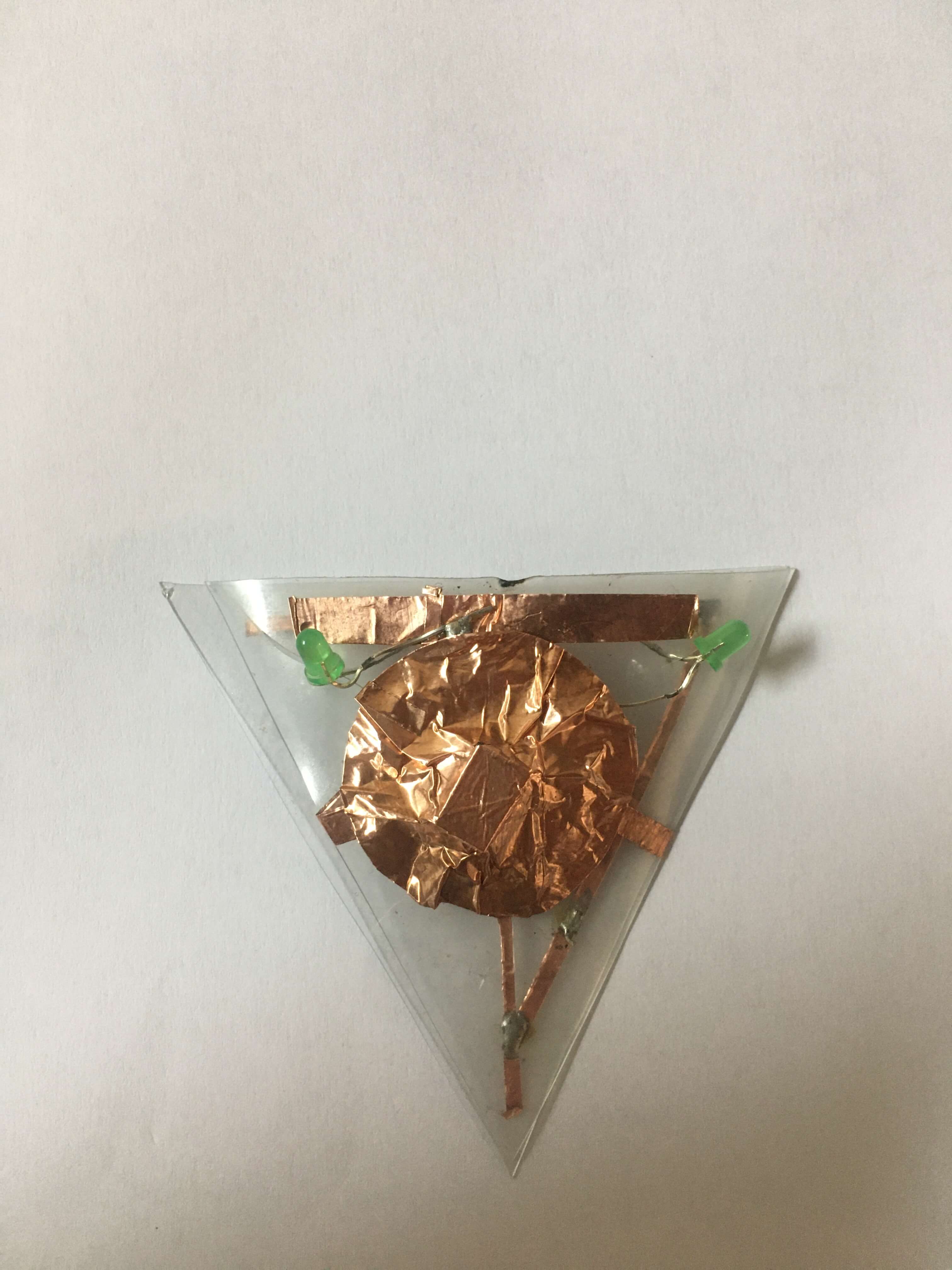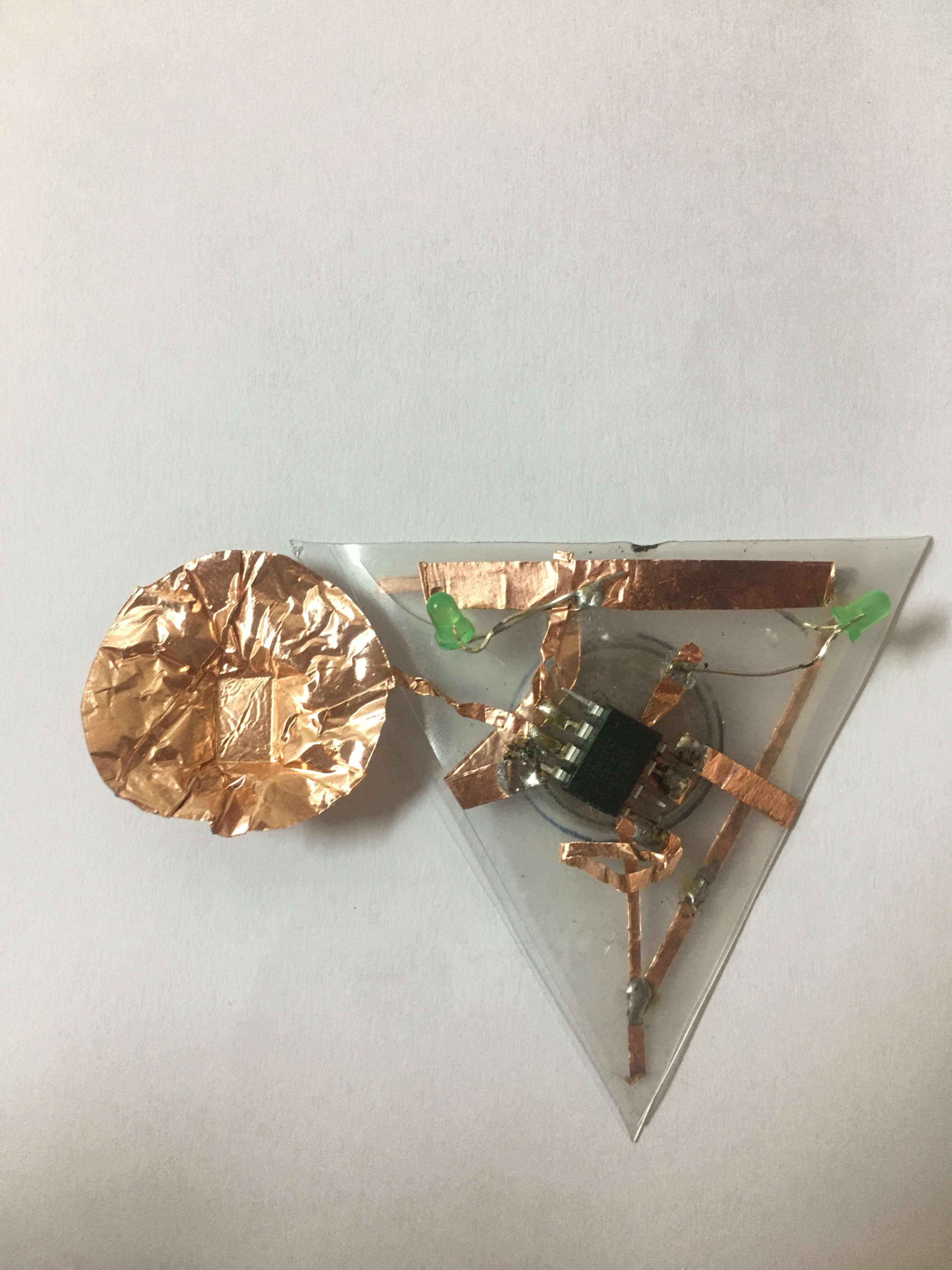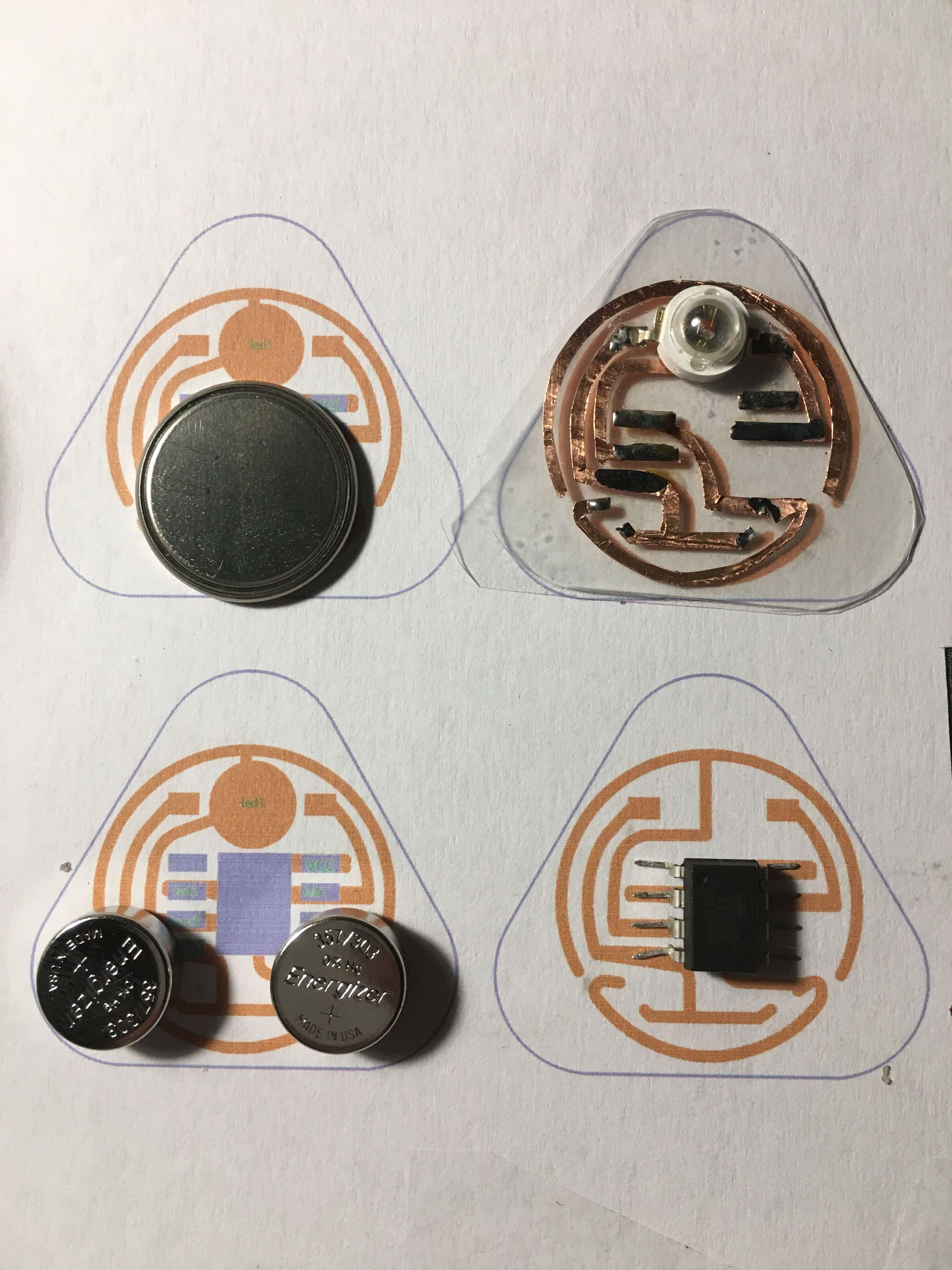13. Skin Electronics¶
December 15th, 2020
Katia Vega
In the same way that the wearables industry is integrating fashion practices in their development, we envision new partnerships between the biotech/tech companies and skin professionals such as makeup artists…
Concept : Meditation Tattoo¶
Meditation is an old practice, that can be found in one form or another in multiple cultures. Recently has also seen a resurgence in our culture due to all the health benefits.


A foreheads tattoo, representing a third eye, that turns on and tells people around you, you are in a meditative state.. or close to it. Also it should look good in photos, and I've picked the habit too.
The Construction process¶
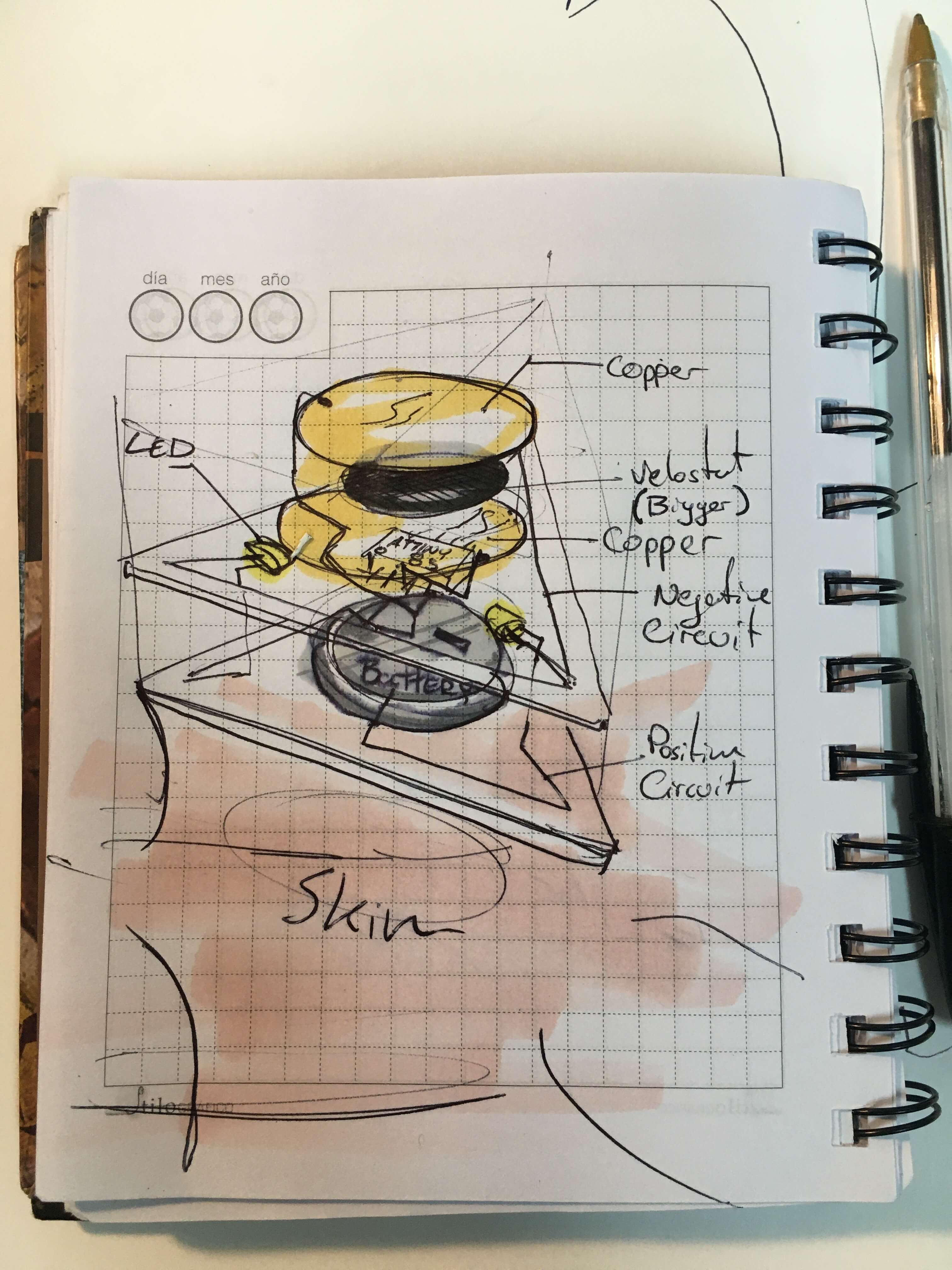
-
Attiny 85
-
LED, small
-
CR2032 battery
-
Thin wire
-
Transparent layer of Vinyl, by US Chemicals, also has glue innately. Its sort of like a sticky note.
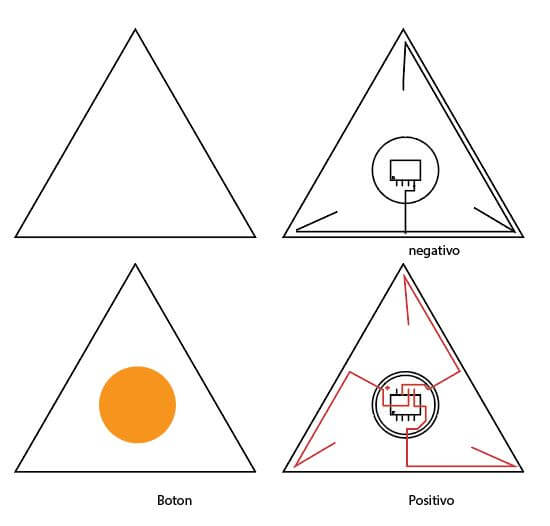

Code¶
// attiny85
// reset -+---+- power
// (on while touching) pb3 -+* +- pb2 (toggled by touch)
// (touch input) pb4 -+ +- pb1 (fading while touching)
// ground -+---+- pb0 (fading always)
int fadepin1 = 0; // the led that fades on and off
int fadepin2 = 1; // the led that fades on and off while you're touching the input pin
int togglepin = 2; // the led that's toggled when you touch the input pin
int steadypin = 3; // the led that's on while you're touching the input pin
int calibration = 0;
int previous;
int randomval = 0;
int fadeval = 0, fadestep = 1;
int togglestate = LOW;
void setup()
{
pinMode(fadepin1, OUTPUT);
pinMode(fadepin2, OUTPUT);
pinMode(togglepin, OUTPUT);
pinMode(steadypin, OUTPUT);
delay(100);
for (int i = 0; i < 8; i++) {
calibration += chargeTime(PB4);
delay(20);
}
calibration = (calibration + 4) / 8;
}
void loop()
{
int n = chargeTime(PB4);
if (n > calibration) digitalWrite(steadypin, HIGH);
else digitalWrite(steadypin, LOW);
analogWrite(fadepin1, fadeval);
if (n > calibration) analogWrite(fadepin2, fadeval);
else analogWrite(fadepin2, 0);
fadeval = fadeval + fadestep;
if (fadeval == 255) fadestep = -1;
if (fadeval == 0) fadestep = 1;
if (previous <= calibration && n > calibration) {
if (togglestate == LOW) togglestate = HIGH;
else togglestate = LOW;
digitalWrite(togglepin, togglestate);
}
previous = n;
delayMicroseconds(500);
}
byte chargeTime(byte pin)
{
byte mask = (1 << pin);
byte i;
DDRB &= ~mask; // input
PORTB |= mask; // pull-up on
for (i = 0; i < 16; i++) {
if (PINB & mask) break;
}
PORTB &= ~mask; // pull-up off
DDRB |= mask; // discharge
return i;
}
working Tattoo¶
Final work progress¶

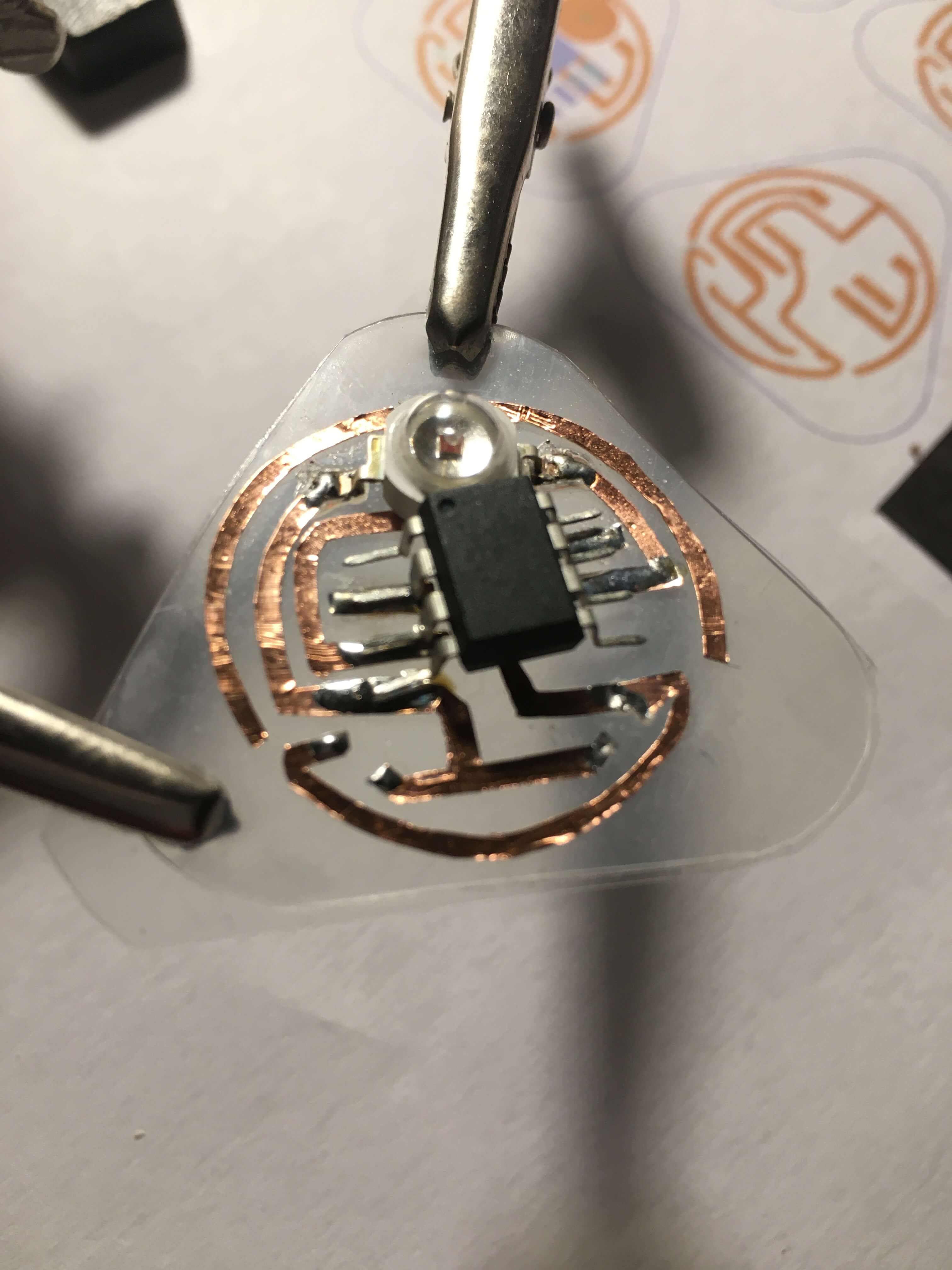
It works as follows:
Final Traces¶
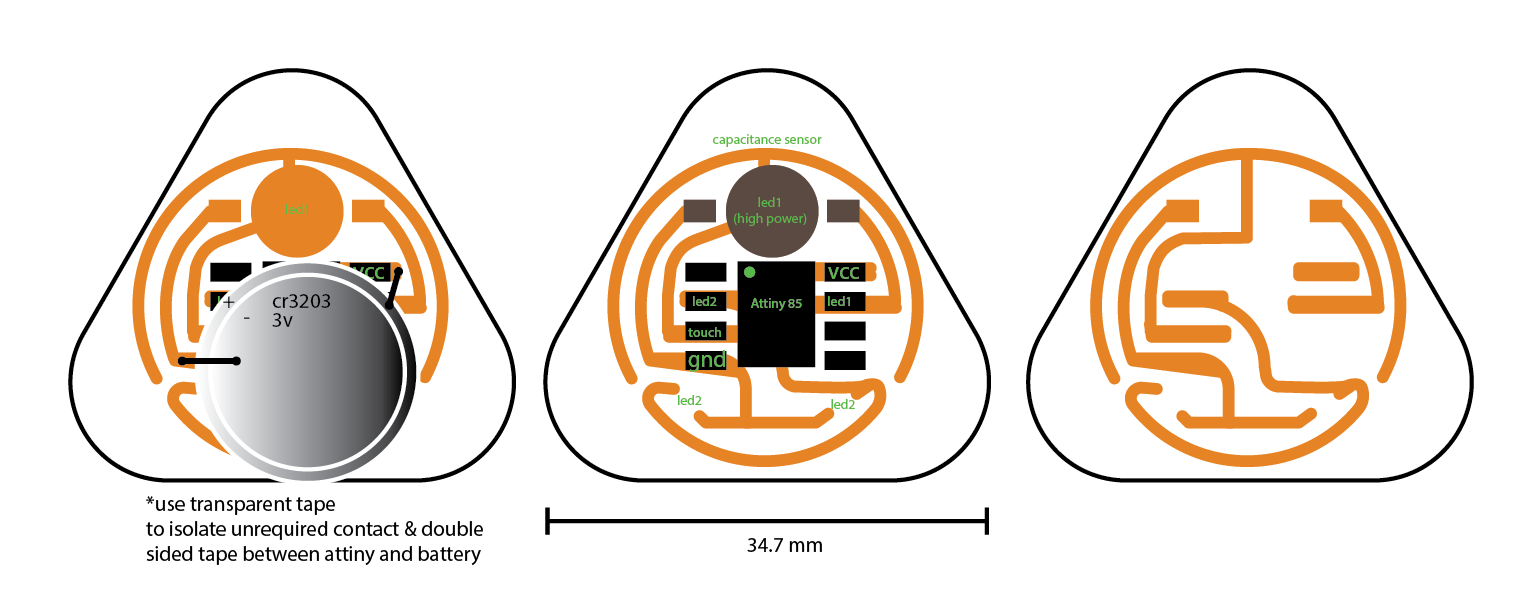
Interestingly the first tests where cut by hand and patience, due to the covid pandemic.
The outer trace works as a capacitive sensor, when detects touch the high intensity led will turn on, and off accordingly. Two smd leds turn on when the sensor is activated and turn off.
Useful links¶
- attiny with capacitive sensor
- Forum Attiny & cr battery
- Turn down all attiny
-
Attiny: Capacitive Sensing - This is in How to get what you want, honestly I should have it listed in every page.
- create programming with attiny85
- LED SMD sides
